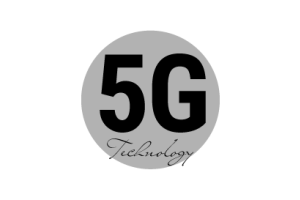
Data Center
- A data center is a facility used to house computer systems and associated components, such as telecommunications and storage systems. It generally includes redundant or backup power supplies, redundant data communications connections, environmental controls (e.g., air conditioning, fire suppression), and various security devices.
- Data centers are used by organizations to store, process, and manage large amounts of data and to host applications and services. They are critical infrastructure for many organizations, as they provide the resources needed to support a wide range of business functions and operations.
- Data centers can be owned and operated by a single organization, or they can be rented or leased by multiple organizations. They can range in size from small, local facilities to large, multi-building complexes.
- Data centers are designed to be highly available and reliable, with redundant systems and components in place to minimize the risk of downtime. They are also typically designed to be energy efficient, with advanced cooling and power management systems in place to minimize energy consumption.
- Data centers are classified according to various criteria, including their size, the types of services they provide, and the level of security and availability they offer. Some common types of data centers include enterprise data centers, colocation data centers, and cloud data centers. Enterprise datacenters are owned and operated by a single organization and are used to support the organization's specific IT needs. Colocation datacenters are owned and operated by third-party companies and are used by multiple organizations to house their IT equipment. Cloud datacenters are owned and operated by cloud computing providers and are used to deliver cloud services to their customers.
- Datacenters are designed to be highly redundant and resilient, with multiple layers of security and redundant components to ensure uptime. They are typically designed to withstand various types of disasters, including power outages, natural disasters, and cyber attacks.
- Data centers play a vital role in the modern economy by providing the infrastructure needed to store, process, and manage data and to support the operation of various applications and services. They are used by a wide range of organizations, including businesses, government agencies, hospitals, universities, and other institutions.
Overall, data centers are a critical part of the modern information infrastructure, providing the resources needed to support a wide range of business and organizational functions and operations.


What Is Structured Cabling?
Structured cabling systems, also known as structured wiring systems, are networks of cables and other hardware that are used to support a wide range of communication systems within a building or campus. They include the cables, connectors, patch panels, racks, and other hardware that are used to connect devices such as computers, phones, printers, and other devices to each other and to the network.
Structured cabling systems are designed to be flexible and scalable, allowing them to support the current and future needs of the organization. They are also designed to be easy to install, maintain, and modify, allowing organizations to easily add or remove devices and systems as needed.
Structured cabling systems can be used to support a wide range of communication systems, including data networks, telephone systems, audio and video systems, security systems, and many others. They are a critical part of the modern communication infrastructure, enabling organizations to connect devices and systems to each other and to the outside world.
Overall, structured cabling systems play a vital role in the operation of modern communication systems, providing the infrastructure that supports the transmission of data, voice, and video within buildings and campuses.





